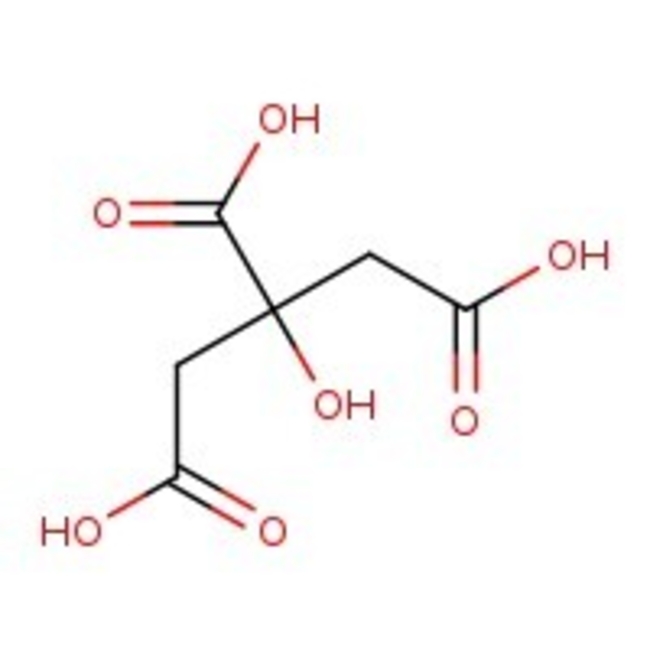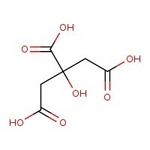Search Thermo Fisher Scientific
Thermo Scientific Chemicals
Citric acid, Electrophoresis Grade, 99.5+%
CAS: 77-92-9 | C6H8O7 | 192.12 g/mol
| Catalog Number | Quantity |
|---|---|
| ALFJ64322.36 | 500 g |
Catalog number ALFJ64322.36
View Price:Sign InSign in to see your account pricing. Need an account? Register with us today.
Quantity:
500 g
Specifications
Chemical Name or MaterialCitric acid
pH1.6
CAS77-92-9
Melting Point153°C to 154°C
Health Hazard 1H319-H335-H500
View more
Citric acid is a starting point in the Krebs cycle and is a key intermediate in metabolism. It has anticoagulant activity; as a calcium chelator, it forms complexes that disrupt the tendency of blood to clot. It may be used to adjust pH and as a sequestering agent for the removal of trace metals.
This Thermo Scientific Chemicals brand product was originally part of the Alfa Aesar product portfolio. Some documentation and label information may refer to the legacy brand. The original Alfa Aesar product / item code or SKU reference has not changed as a part of the brand transition to Thermo Scientific Chemicals.
Applications
Citric acid is a starting point in the Krebs cycle and is a key intermediate in metabolism. It has anticoagulant activity; as a calcium chelator, it forms complexes that disrupt the tendency of blood to clot. It may be used to adjust pH and as a sequestering agent for the removal of trace metals.
Solubility
Soluble in water. Also soluble in alcohol and methanol. Insoluble in chloroform and benzene.
Notes
Hygroscopic. Incompatible with oxidizing agents.
Citric acid is a starting point in the Krebs cycle and is a key intermediate in metabolism. It has anticoagulant activity; as a calcium chelator, it forms complexes that disrupt the tendency of blood to clot. It may be used to adjust pH and as a sequestering agent for the removal of trace metals.
Solubility
Soluble in water. Also soluble in alcohol and methanol. Insoluble in chloroform and benzene.
Notes
Hygroscopic. Incompatible with oxidizing agents.
RUO – Research Use Only
General References:
- J.R.Marier; M.Boulet. Direct determination of citric acid in milk with an improved pyridine-acetic anhydride method. Journal of Dairy Science. 1958, 41,(12), 1683-1692.
- H.A.Krebs; W.A.Johnson. The role of citric acid in intermediate metabolism in animal tissues. FEBS Letters. 1980, 117,(Supplement 1), K2-K10.



